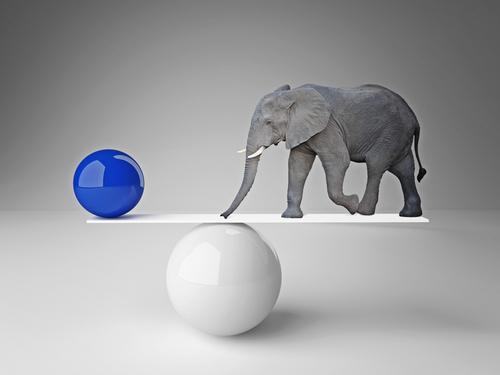False Balance: When Science Bloggers Get Science Right
“Let me start with an audacious assertion: A major problem confronting science journalists is that they have trouble communicating what’s true. Even when competing claims are wildly lopsided — think climate change, for example — science journalists feel that they cannot tell their audience that one of the claims is surviving scientific scrutiny better than others.” – Sharon Dunwoody, on SciDev.net
SciDev.net recently posted an excellent piece by Sharon Dunwoody, Evjue-Bascom Professor Emerita in the School of Journalism and Mass Communication at the University of Wisconsin-Madison, on what she calls ‘weight-of-evidence’ reporting. Dunwoody says, “[w]ith this approach a reporter would ascertain not which truth claim is most likely to be valid, but which has garnered the most support from the scientists qualified to vet it.”
Dunwoody points out that ‘weight-of-evidence’ reporting does much more to help audiences understand science and scientific debates than does the classic reporting approach of presenting opposing sides equally. And we aren’t just talking about false balance, although that is a problem too. Presenting an opposing side in a story about a scientific finding, for example, without giving context as to how prominent or frequent the opposing side really is, leads audiences to simply conclude that scientists ‘can’t make up their minds.’ When, in fact, a journalist might have looked long and hard for that one opposing viewpoint.
“When editors or audiences detect what they believe to be the reporter’s opinion in a story, that journalist risks being accused of bias. Indicating which scientific claims are more likely to be true sets a journalist up for a serious credibility problem.” – Sharon Dunwoody, on SciDev.net
In my #MySciBlog interviews with science bloggers, I’ve come to realize that yes, the best science bloggers are fair and ethical with respect to talking about alternative interpretations and viewpoints. But they are not afraid to take a stand or express their expert opinion on a scientific issue, problem or new discovery.
“I know I’m right.” – a #MySciBlog interviewee and prominent science blogger
One interviewee took pains to show me just how much research she puts into a story. If she can’t find enough scientific evidence to back up a hunch or a pattern she sees, she doesn’t tell the story. But when she can, and when she has amassed the scientific evidence to back it up, she has no problem pointing readers to an issue and saying, ‘here is the truth as I see it.’ And she doesn’t feel the pressure to get a quote from ‘the other side’ when the other side is buried under an avalanche of scientific data and agreement among the ‘right’ experts.
It might just be that the real power of science blogging is the ability of top-notch scientists and science journalists to feel comfortable weighing the evidence as they see fit – not as a non-science-trained editor sees fit. The same interviewee as above told me if she were in a traditional science reporting role, she’d feel obliged to seek out and incorporate the “opposing voice” in a story even before having the editor lay eyes on it. In other words, there are standards and norms in journalism that don’t die easily. These include ways of going about balance that present the opposing sides of an issue, but no more. What about the beat journalist's expert opinion, as someone who has been covering this topic or issue for years? What about contextual information about how many experts said the same thing, and how credible the "outlier" is? Journalists who learn practices of balance or two-sided reporting often don’t question them – and perhaps often don’t even try to argue with editors as much as they should.
Blog Editor: Don’t you think you need a quote from someone in Industry on this on?
Blogger: No, I don’t. The science is rock… solid.
Blog Editor: OK.
Perhaps there is something in the culture of blogging that leads journalists and scientists alike to run with what they know to be true, from extensive research, personal scientific expertise or experience. This isn’t to say the best science bloggers aren’t careful to point out opposing views or alternative explanations when they are valid – they are. But if more science journalists in the traditional media environment were trained (or rather given the freedom) to think a little more like science bloggers, would readers get a more valid picture of scientific debate?
More reading on controversy, popular science, false balance and valid science reporting:
- When It Comes To sciPOP, Controversy Quells (Jason Tetro)
- Let's change how we report truth in science journalism (Sharon Dunwoody)
- The problem of false balance when reporting on science (Peter Ellerton)

